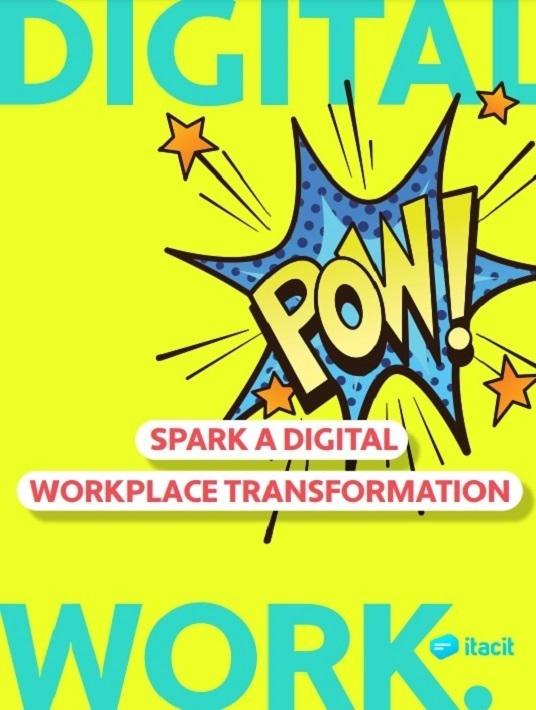Challenges Your Front-Line Employees Face And How To Tackle Them
Front-line employees keep our society running safely and efficiently. Whether they’re in the healthcare field, sanitation, transport, or manufacturing, these essential workers are the unsung heroes who work long hours, often on their feet all day, to provide citizens with the services we rely on.
Organizations with a mix of front-line and desk-based employees can struggle to find the right balance of employee communication that engages this diverse range of staff. For front-line workers, being away from a company’s central hub, often on the go all day, can lead to a disconnect. That could mean a feeling of exclusion from certain activities and communications, or even missing out on a sense of belonging to the team.
Front-line employees face several unique challenges in their day-to-day jobs. Let’s take a look at some of the most common issues and offer concrete solutions to help your organization best meet the needs of your front-line staff.

5 Front-Line Challenges
1. Front-Line Employees Can Feel Disconnected
Front-line workers don’t always follow the typical 9-to-5 office hours. They can be working nights, extra-long shifts, weekends, or be on the road. The overlap with standard office working hours can be limited.
A lot of traditional office communication is based around that Monday-to-Friday, 9-to-5 routine. Because of this, front-line workers can be left out of key communications, team activities, or important meetings.
To help ensure front-line employees feel connected to their central hub, we recommend engaging in truly inclusive business activities by harnessing technology through:
- Using a centralized application with integrated communication functionality to bring everything together so that employees and partners always have a dedicated hub to return to. They can access training material, reference documents, or engage in discussions with their teams through a built-in intranet.
- Helping organizations extend their company culture to all front-line employees through boosting EX (employee experience).
2. Lack Of Rituals
Front-line staff can struggle to find daily rituals at work. In certain fields, like healthcare for example, employees may have erratic, unpredictable days. Of course, the rush of the job is a motivator for many people in these types of roles, but there is certainly a lack of ritual to fall back to for comfort.
To help front-line workers develop healthy workplace rituals, consider:
- Scheduling routine (i.e., weekly or monthly) meetings with specific groups or individuals to discuss what’s new, any problems, or just to have a chat. Keeping it casual and friendly takes extra pressure off the group and allows for a more inclusive and engaging conversation.
- Using your organization’s intranet—or employee app—to boost engagement and team spirit for dispersed front-line staff. Your intranet can act as a digital hub where staff can meet, post questions, comments, and engage just like the social media platforms they’re used to.
3. Ineffective Team Comms
Communicating with front-line staff is a widespread challenge for all employers. It’s the workers themselves who ultimately suffer. Without clear team communication and a direct line to leadership, front-line staff can often feel left out in the cold.
Bolstering team communication throughout the front-line takes a combination of technology, training, and a little extra effort from the communications team.
Organizations can be more effective in their communication through:
- Considering the specific wants and needs of the front-line staff. Walk a shift in their shoes and understand their day-to-day. Use empathy when designing communication strategies to truly reach and engage front-line workers.
- Scheduling routine casual meetings—with either individuals or teams—to make sure that every employee is given the time to have their voice heard.
- Breaking down geographical barriers through harnessing the power of technology. We know how powerful digital workplaces and remote meetings can be. Use a digital employee app platform to bring dispersed staff together to one central hub.
4. The Front-Line Is On The Go, All The Time
Day-to-day schedules for front-line staff are all over the map. Day shifts, night shifts, weekends…you name it. For front-line workers, this is just the reality of their positions and a motivation for many.
Front-line workers aren’t always checking their email, phones, or messages. They’re busy and focused on making sure their work gets done. It can be a challenge to keep these types of employees up-to-date with what’s happening in the organization.
To help make it easier for front-line workers to access important communications, training, or updates, try:
- Establishing a digital messaging system that’s easy to access on their own time. Within an employee app, direct messaging keeps all things “work” limited to one centralized location.
- Offering asynchronous training through an all-in-one Learning Experience Platform where employees can complete modules at their own pace.
5. Bridging The Skills Gap
Excelling on the front-line requires a mix of education, experience, and tacit knowledge. For many front-line positions, technology is changing the skills required to meet the demands of the job.
The future of work will see a reduction in many manual labor positions and an increase in artificial intelligence and machine-aided tools. To make sure employees aren’t left behind on this shift toward automation, employers must be active in reskilling and upskilling their staff.
A continuous approach to learning will help every organization and its staff to keep on top of new trends in their fields and better position themselves for the future by harnessing:
- Curated front-line training that meets the direct wants and needs of each specific employee. Reskilling and upskilling for the future is imperative to provide employees with up-to-date proficiencies to enable their growth, professionally and personally.
- A digital learning platform that puts interactive resources at your employees’ fingertips and offers asynchronous training.
Conclusion
Contrary to popular belief, digital workplace transformations aren't just for large organizations with global teams. Even SMBs can reap the rewards to cut training costs and improve overall workflow. Download the eBook Spark A Digital Workplace Transformation to launch your future-ready digital transformation. You can also join the webinar to explore the golden rules to train and engage employees.



![COVID And The Great Resignation: Reimagining The Frontline Workplace And How Employers Can Compete [eBook]](https://cdn.elearningindustry.com/wp-content/uploads/2022/04/shutterstock_207086488.jpg)




